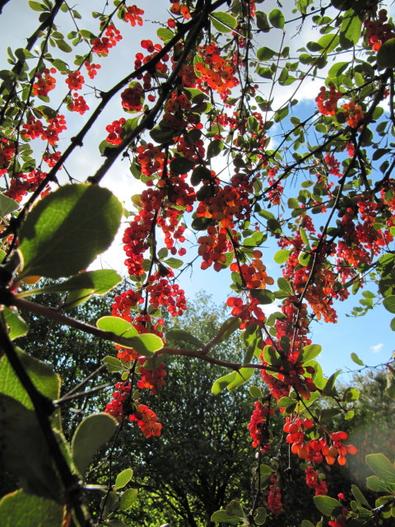James’ Barberry
(Berberis jamesiana)
James’ Barberry (Berberis jamesiana)
/
/

Leonora (Ellie) Enking
CC BY-SA 2.0
Image By:
Leonora (Ellie) Enking
Recorded By:
Copyright:
CC BY-SA 2.0
Copyright Notice:
Photo by: Leonora (Ellie) Enking | License Type: CC BY-SA 2.0 | License URL: https://creativecommons.org/licenses/by-sa/2.0/ | Uploader: wallygrom | Publisher: Flickr





















Estimated Native Range
Summary
Berberis jamesiana, commonly known as James’ Barberry, is a deciduous shrub native to the mountainous regions and alpine thickets of South-Central China, including Qinghai and Tibet. It typically grows to a height of 6-10 feet (1.8-3 meters) and a width of 6-8 feet (1.8-2.4 meters). This species is characterized by its spiny branches and holly-like leaves. The yellow flowers, which appear in the spring, are small but numerous, creating a showy display that is followed by blackish-blue berries that are attractive to birds.
James’ Barberry is valued for its ornamental features, including its striking yellow flowers and its ability to provide year-round interest with its foliage and berries. It is used in gardens for hedging, as a specimen plant, or in mixed shrub borders. It is tolerant of urban pollution and can be planted in urban areas. This shrub prefers full sun but can tolerate part shade and requires well-drained soil. It is drought-tolerant once established, making it suitable for xeriscaping. While generally low-maintenance, it can be susceptible to rust and other fungal diseases.CC BY-SA 4.0
James’ Barberry is valued for its ornamental features, including its striking yellow flowers and its ability to provide year-round interest with its foliage and berries. It is used in gardens for hedging, as a specimen plant, or in mixed shrub borders. It is tolerant of urban pollution and can be planted in urban areas. This shrub prefers full sun but can tolerate part shade and requires well-drained soil. It is drought-tolerant once established, making it suitable for xeriscaping. While generally low-maintenance, it can be susceptible to rust and other fungal diseases.CC BY-SA 4.0
Plant Description
- Plant Type: Shrub
- Height: 6-10 feet
- Width: 6-8 feet
- Growth Rate: Moderate
- Flower Color: Yellow
- Flowering Season: Spring
- Leaf Retention: Deciduous
Growth Requirements
- Sun: Full Sun
- Water: Low
- Drainage: Medium, Fast
Common Uses
Bank Stabilization, Bee Garden, Bird Garden, Border Plant, Butterfly Garden, Deer Resistant, Drought Tolerant, Low Maintenance, Salt Tolerant
Natural Habitat
Native to mountainous regions and alpine thickets of South-Central China, including Qinghai and Tibet
Other Names
Common Names: James Barberry
Scientific Names: , Berberis integerrima, Berberis jamesiana, Berberis leucocarpa, Berberis jamesiana var. leucocarpa, Berberis jamesiana var. sepium, Berberis jamesiana subsp. leucocarpa, Berberis jamesiana subsp. sepium, Berberis jamesiana var. leucarpa, Berberis jamesiana var. saepium
GBIF Accepted Name: Berberis jamesiana Forrest & W.W.Sm.